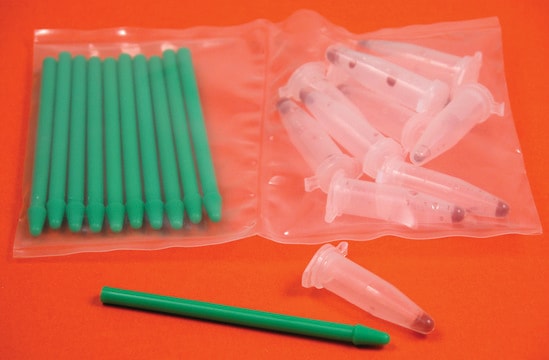This product is only sold as a set. You may want to check with the manufacturer to inquire if the pestles can be obtained separately. For further information, you can contact them at the following link: https://www.dwk.com/na/contact-us. The Kimble catalog number for this item is Kimble® 885300-0002.
D8938
KIMBLE Dounce tissue grinder set
2 mL complete
Synonym(s):
885300-0002, Dounce, Dounce Homogenizer, Glass Tissue Grinder, KIMBLE Tissue Grinder, KONTES, Pestles, Tissue Grinder, Tubes
About This Item
Recommended Products
material
glass
feature
autoclavable
manufacturer/tradename
Kimble® 885300-0002
pestle A clearance
0.0030-0.0050 in.
pestle B clearance
0.0005-0.0025 in.
working volume × L
2 mL × 60 mm
Looking for similar products? Visit Product Comparison Guide
General description
Features and Benefits
Legal Information
Choose from one of the most recent versions:
Certificates of Analysis (COA)
Sorry, we don't have COAs for this product available online at this time.
If you need assistance, please contact Customer Support.
Already Own This Product?
Find documentation for the products that you have recently purchased in the Document Library.
Customers Also Viewed
-
Is it possible to purchase individual pestles for the D8938 KIMBLE Dounce tissue grinder set?
Is it possible to purchase individual pestles for the D8938 KIMBLE Dounce tissue grinder set?
1 answer-
Helpful?
-
-
Can we use this double homogeniser for mitochondria isolation from cells?
1 answer-
This product has not been validated for use in mitochondrial isolation. This is an application that will need to be determined by the end-user, however there are a number of publications citing this product in organelle isolation. It may be helpful to review page 12 of the following journal article:
https://febs.onlinelibrary.wiley.com/doi/pdf/10.1111/febs.14028It also may be helpful to view the peer-reviewed articles:
https://www.sigmaaldrich.com/search/d8938?focus=papers&page=1&perpage=30&sort=relevance&term=d8938&type=citation_searchHelpful?
-
Active Filters
Our team of scientists has experience in all areas of research including Life Science, Material Science, Chemical Synthesis, Chromatography, Analytical and many others.
Contact Technical Service











